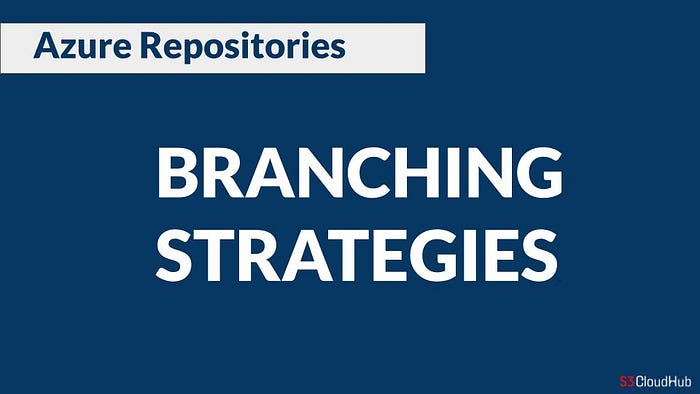In modern software development, effective branching strategies are crucial for managing code changes, facilitating collaboration, and ensuring smooth releases. Azure Repos provides robust support for Git repositories, allowing teams to adopt various branching strategies that suit their workflow. In this article, we’ll explore popular branching strategies and how to implement and manage them in Azure Repos.
Watch This Video for a Visual Guide:-
1. Introduction to Branching Strategies
Branching strategies define how you structure your branches to manage development work, feature additions, bug fixes, and releases. Choosing the right strategy helps in maintaining a clean and organized repository, facilitating collaboration, and improving code quality.
1.1 Why Branching Strategies Matter
- Code Management: Keep the main branch stable while developing new features or fixing bugs in isolated branches.
- Collaboration: Enable multiple developers to work on different features simultaneously without interfering with each other’s work.
- Release Management: Plan and manage releases effectively by controlling when features are merged into the main branch.

2. Popular Branching Strategies
2.1 Git Flow
Git Flow is a popular branching model that uses multiple branches to manage the development cycle.
- Main Branches:
master: The production-ready branch with stable code.develop: An integration branch where features are merged before going into production.- Supporting Branches:
- Feature Branches: For developing new features. Created from
developand merged back intodevelopwhen complete. - Release Branches: For preparing a release. Created from
developand merged intomasteranddevelopafter the release. - Hotfix Branches: For urgent fixes. Created from
masterand merged back intomasteranddevelop.
2.2 GitHub Flow
GitHub Flow is a simpler strategy suited for continuous delivery and deployment.
- Main Branches:
main: The single production branch.- Workflow:
- Create feature branches from
main. - Open pull requests to merge feature branches into
main. - Deploy to production from the
mainbranch.
2.3 GitLab Flow
GitLab Flow integrates feature-driven and environment-driven workflows.
- Main Branches:
main: Production-ready branch.develop(optional): Integration branch.- Supporting Branches:
- Feature Branches: Created from
mainordevelop. - Release Branches: Managed to deploy to staging or production environments.
- Environment Branches: Branches for different environments (e.g.,
staging,production).
3. Implementing Branching Strategies in Azure Repos
3.1 Creating Branches
To create a branch in Azure Repos:
- Navigate to your Azure Repos repository.
- Click on the Branches tab.
- Click New Branch.
- Enter the branch name and select the base branch (e.g.,
mainordevelop). - Click Create Branch.
3.2 Managing Branches
- Branch Policies: Set policies to enforce quality checks (e.g., required reviews, build validations).
- Pull Requests: Use pull requests to review and merge changes from feature branches to the main branch.
- Branch Protection: Protect branches from direct pushes to maintain code quality.
3.3 Merging Branches
- Merge Requests: Open a pull request to propose changes from a feature or release branch into the main branch.
- Rebasing: Use rebasing to keep your branch up-to-date with the latest changes from the base branch before merging.
4. Best Practices for Branching Strategies
- Keep Branches Short-Lived: Avoid long-lived branches to reduce merge conflicts.
- Use Descriptive Names: Name branches based on the feature or issue they address.
- Regularly Merge: Regularly merge feature branches into integration branches to avoid integration issues.
- Automate Workflows: Use Azure Pipelines to automate build, test, and deployment processes.
5. Conclusion
Mastering branching strategies in Azure Repos is essential for efficient code management and successful collaboration. By adopting the right strategy and leveraging Azure Repos’ features, you can streamline your development workflow, enhance code quality, and ensure smoother releases. Start implementing these strategies today and watch your development process improve!
Connect with Me:
- YouTube ► S3 CloudHub Channel
- Facebook ► S3 CloudHub Page
- Medium ► S3 CloudHub Blog
- Demo Reference ► GitHub Repository
- Blog ► S3 CloudHub Blogspot
- Dev ► S3 CloudHub on Dev.to

No comments:
Post a Comment